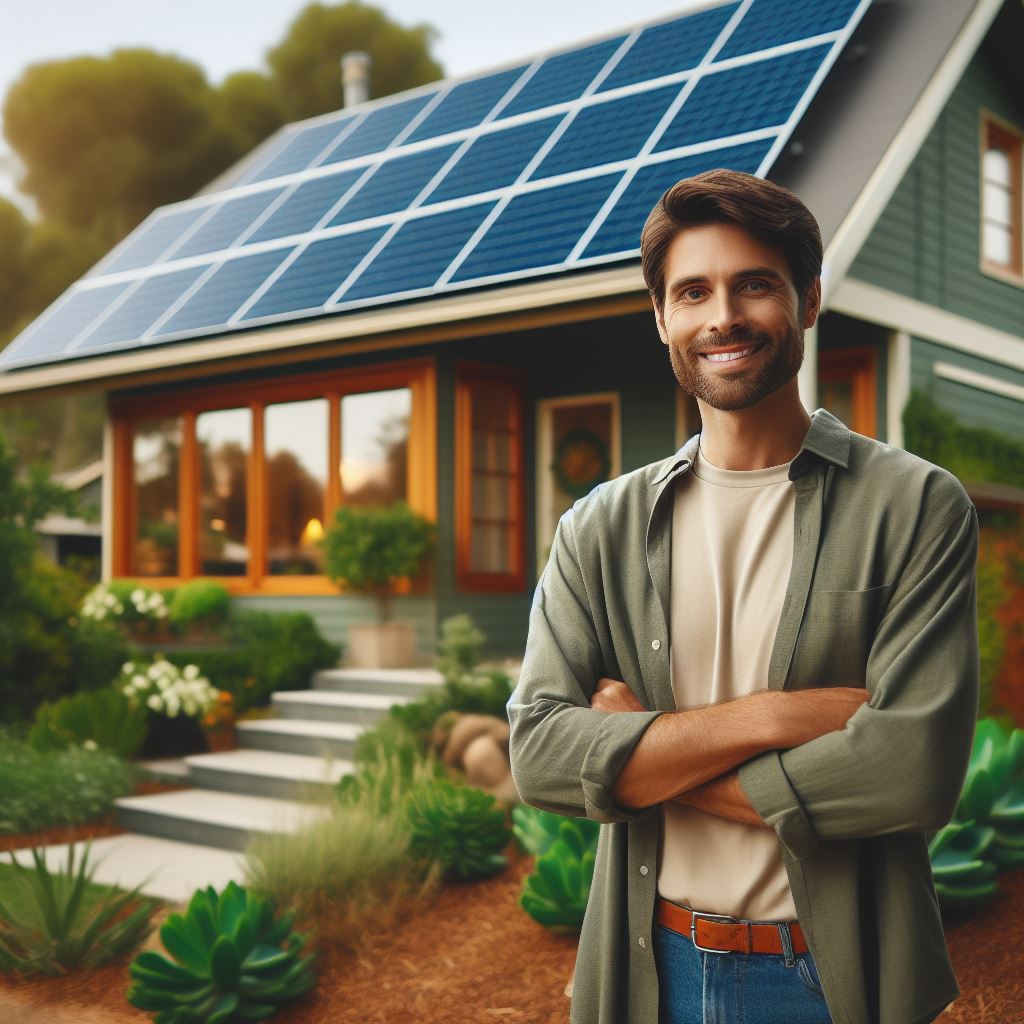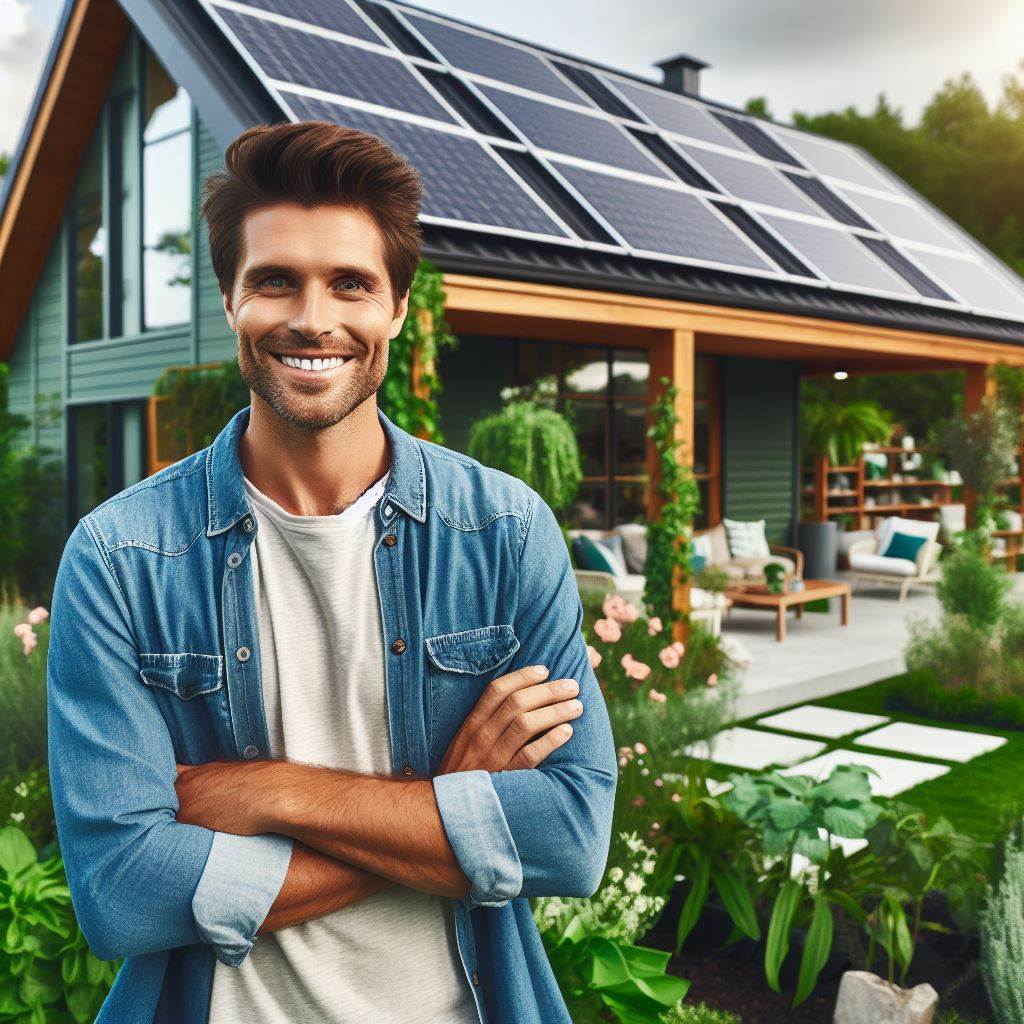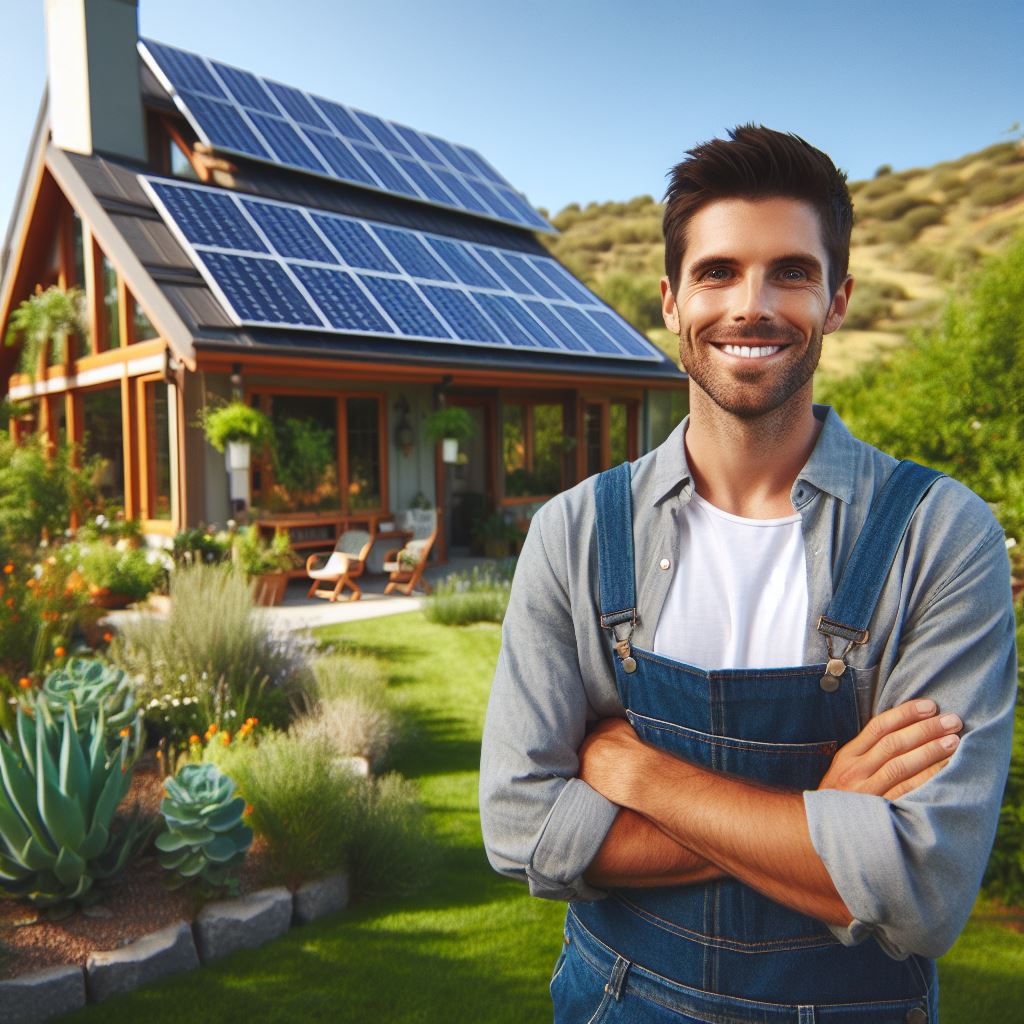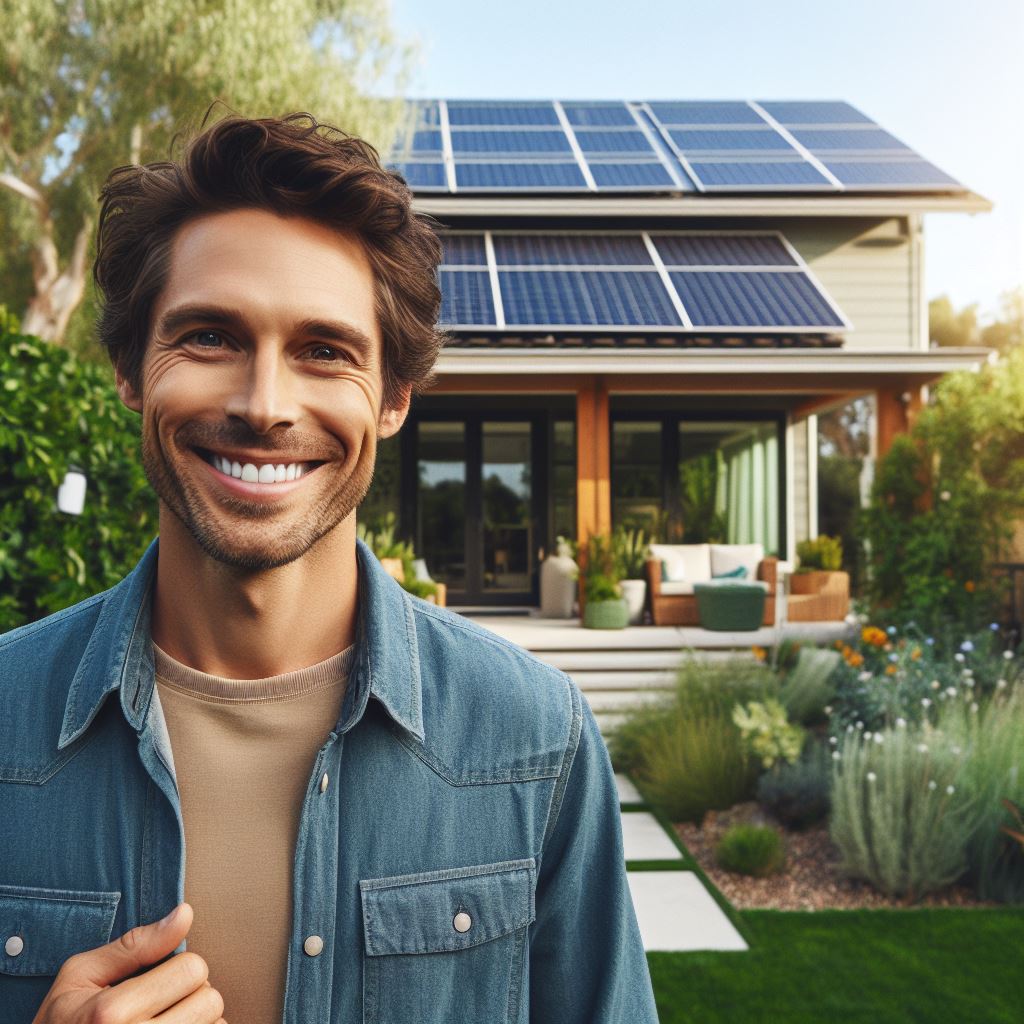Introduction
Green home features have gained significant popularity in recent years due to their numerous advantages and benefits.
These features are designed to promote sustainability, reduce environmental impact, and improve overall living conditions.
As the world becomes increasingly conscious of the need for eco-friendly practices, green homes are emerging as the ideal solution.
A. Brief explanation of the increasing popularity of green home features
The rising popularity of green home features can be attributed to several factors.
Firstly, individuals are becoming more aware of the urgent need to combat climate change and preserve our planet’s resources.
By choosing green home features, homeowners contribute to reducing their carbon footprint and promoting a healthier environment.
Additionally, the increasing availability and affordability of green technologies and materials have made it easier for people to incorporate sustainable features into their homes.
From energy-efficient appliances to renewable energy systems, there is a wide range of options for homeowners to choose from.
B. Importance of sustainable living and reducing environmental impact
Sustainable living is essential for the well-being of both present and future generations.
By adopting green home features, individuals contribute to the conservation of natural resources, such as water and energy.
This not only reduces their environmental impact but also helps to lower utility bills and increase energy independence.
Furthermore, green homes provide a healthier living environment by minimizing the use of harmful chemicals and toxins.
Non-toxic building materials, efficient ventilation systems, and improved indoor air quality contribute to a healthier lifestyle, reducing the risk of respiratory issues and allergies.
In essence, the increasing popularity of green home features is a testament to society’s growing commitment to sustainable living and environmental responsibility.
By embracing these features, individuals not only contribute to a healthier planet but also benefit from improved living conditions and long-term cost savings.
Energy-Efficient Appliances and Lighting
When it comes to green home features, one of the top considerations is energy-efficient appliances and lighting.
These advancements not only reduce electricity consumption but also help homeowners to save money on utility bills.
A. Overview of advanced technologies in energy-efficient appliances
The evolution of energy-efficient appliances has been remarkable.
Manufacturers are continuously integrating advanced technologies to create appliances that consume less energy without compromising their functionality.
For instance, refrigerators now come with improved insulation and compressor systems that require less power to maintain optimal temperatures.
This not only reduces energy consumption but also extends the lifespan of perishable goods.
Similarly, washing machines are designed with sensors that automatically adjust water levels and cycle duration based on the load size.
These smart features ensure efficient water and energy usage, resulting in significant savings.
Ovens and stoves have also undergone significant advancements.
Induction cooktops, for example, use electromagnetic technology to heat cookware directly, rather than heating the entire surface.
This results in faster cooking times, lower energy consumption, and safer operation.
B. Benefits of LED lighting and its energy-saving capabilities
LED lighting has revolutionized the world of home lighting.
Unlike traditional incandescent bulbs, LEDs consume far less energy and have a significantly longer lifespan.
LED bulbs convert most of the energy they consume into light, rather than heat, making them highly efficient.
Furthermore, they can last up to 25 times longer than traditional bulbs, saving homeowners the hassle and expense of frequent replacements.
Additionally, LEDs provide excellent lighting quality, generating bright and uniform illumination.
They are available in various colors and can be dimmed, further enhancing their versatility in creating the desired ambiance.
The energy-saving capabilities of LED lighting are impressive.
By replacing traditional bulbs with LEDs, households can reduce their energy consumption for lighting by up to 80%.
This directly translates into lower electricity bills and a lighter environmental footprint.
C. Impact on reducing electricity consumption and utility bills
The adoption of energy-efficient appliances and LED lighting has a substantial impact on reducing electricity consumption in homes.
As households consume less energy, the demand on power plants decreases, enabling a greener and more sustainable energy grid.
Moreover, the reduced energy consumption directly translates into lower utility bills for homeowners.
By investing in energy-efficient appliances and LED lighting, families can save a significant amount of money over the long run, enhancing their financial well-being.
Besides the financial benefits, reducing electricity consumption also helps to mitigate the environmental impacts of energy production.
By conserving energy, we decrease the demand for fossil fuels, reduce greenhouse gas emissions, and contribute to a cleaner and healthier planet.
In fact, energy-efficient appliances and LED lighting are vital elements of green homes.
The advancements in energy-saving technologies and the use of LED lighting have revolutionized the way we consume electricity, saving money and reducing our environmental impact in the process.
By embracing these green home features, we can create a more sustainable future for generations to come.
Read: Sustainable Homes: Cost vs. Value
Solar Power Systems
A. Growing adoption of solar panels in residential properties
Solar power systems have seen a remarkable increase in adoption in residential properties, with homeowners recognizing the numerous benefits they offer.
The growing interest in solar panels has catapulted them to be one of the top green home features in 2024.
B. How solar energy works
Solar energy works by absorbing sunlight through solar panels, which are composed of photovoltaic (PV) cells.
These cells convert sunlight into direct current (DC) electricity.
An inverter then converts the DC electricity into alternating current (AC) electricity, making it suitable for use by households.
C. Advantages of solar power
One of the major advantages of solar power systems is their contribution to reducing reliance on traditional fossil fuels.
By harnessing clean and renewable solar energy, homeowners can play a crucial role in mitigating climate change and reducing carbon emissions.
This shift towards clean energy sources is vital in combating the pressing environmental issues we currently face.
Another significant advantage of solar power systems is the long-term cost savings they offer.
While the initial installation cost may seem high, solar panels have a long lifespan and require minimal maintenance.
As a result, homeowners can enjoy significant savings on their electricity bills in the long run.
Additionally, some governments provide incentives and tax credits to promote the adoption of solar energy, providing even more financial benefits to homeowners.
Other advantages
Apart from reducing reliance on fossil fuels and providing cost savings, solar power systems also offer several other advantages.
These include:
- Energy independence: Solar energy allows homeowners to generate their electricity, reducing dependence on the grid and potential electricity shortages.
- Increased property value: Homes equipped with solar panels often have higher market values, making them more attractive to potential buyers.
- Renewable and sustainable: Solar energy is a renewable resource, ensuring a continuous and sustainable source of clean electricity.
- Reduced environmental impact: Solar power systems produce clean energy without emitting harmful greenhouse gases, helping to preserve the environment.
- Reliable power source: Solar energy is abundant, especially in areas with ample sunlight, providing a reliable source of electricity.
In short, solar power systems have become a top green home feature in 2024 due to their numerous advantages, including reduced reliance on fossil fuels and long-term cost savings.
With the growing adoption of solar panels in residential properties, homeowners are embracing solar energy as a sustainable and environmentally-friendly alternative.
The benefits of solar power, such as energy independence and increased property value, further contribute to their popularity.
As the world continues to prioritize sustainability, solar power systems will play a crucial role in creating greener homes and a cleaner future.
Read: Green Building: What’s New in the US?
Smart Home Automation
A. Introduction to smart home technology and its integration with green features
Smart home automation is revolutionizing the way we live, making our lives more convenient and eco-friendly.
With the integration of smart home technology, green features are becoming more accessible and efficient.
Let’s explore some of the top green home features that are predicted to dominate in 2024.
One of the key components of a smart green home is the use of smart thermostats.
These devices allow homeowners to optimize energy usage by automatically adjusting the temperature based on occupancy and user preferences.
Smart thermostats can learn from your behavior and create personalized schedules to maximize energy savings.
Not only do they reduce energy waste, but they also provide better comfort and convenience.
Automated lighting systems are another essential feature for green homes.
These systems use sensors and timers to turn lights on and off based on occupancy and natural light availability.
By eliminating the need for manual control, automated lighting systems help prevent energy wastage.
Additionally, they can be integrated with other smart home devices, such as motion sensors and smart speakers, to create a more seamless and efficient experience.
In conjunction with smart home automation, energy monitoring devices play a crucial role in identifying energy consumption patterns and areas for improvement.
These devices provide real-time information about energy usage, allowing homeowners to make informed decisions to reduce their carbon footprint.
From monitoring appliance efficiency to identifying energy-draining devices, energy monitoring devices empower homeowners to take control of their energy consumption.
B. Benefits of smart thermostats for optimized energy usage
The integration of smart home technology and green features has numerous benefits.
First and foremost, it promotes energy efficiency, reducing the overall carbon footprint of a home.
By optimizing energy usage, homeowners can significantly lower their energy bills and save money in the long run.
Moreover, these features enhance the comfort and convenience of living spaces, providing a more enjoyable and sustainable lifestyle.
Aside from energy optimization, smart home automation also enhances home security.
With advanced security systems, homeowners can remotely monitor their homes, receive real-time alerts, and control access to their properties.
This feature not only ensures the safety of residents but also minimizes unnecessary energy consumption by allowing homeowners to manage their security systems efficiently.
C. Use of automated lighting systems and energy monitoring devices
In terms of environmental impact, smart home automation has the potential to revolutionize sustainability efforts on a larger scale.
By connecting households through smart grids, energy distribution can be optimized, reducing the strain on the power grid during peak hours.
This not only minimizes the risk of blackouts but also ensures a more sustainable and reliable energy future.
As we move towards a greener future, smart home automation will undoubtedly play a significant role.
The integration of smart home technology with green features provides homeowners with the opportunity to live a more sustainable lifestyle while enjoying the benefits of convenience, comfort, and cost savings.
Whether it’s through smart thermostats, automated lighting systems, or energy monitoring devices, embracing these top green home features can make a world of difference in our quest for a sustainable future.
Read: Eco Homes in 2024: Trends and Outlook
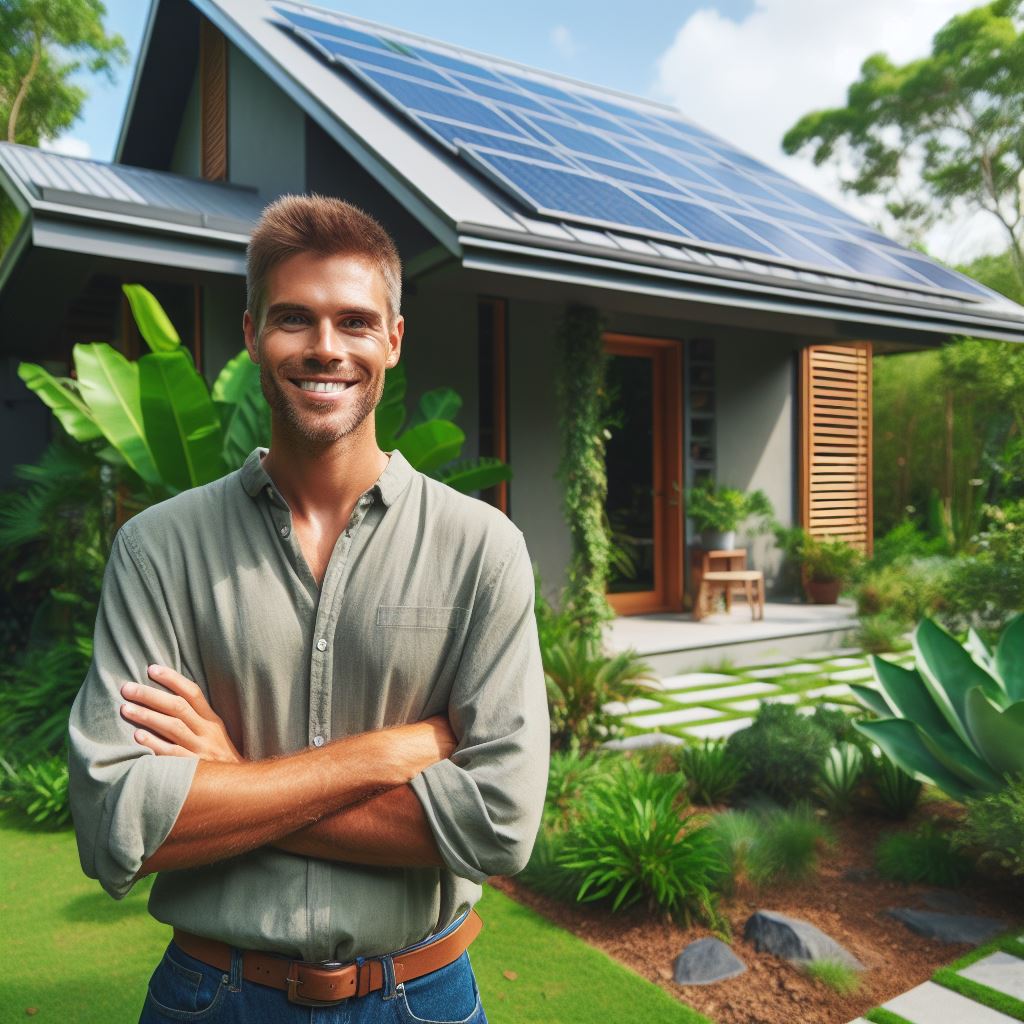
Low-Flow Plumbing Fixtures
A. Water-saving technologies in plumbing fixtures
Low-flow plumbing fixtures are an essential feature of green homes in 2024.
hese fixtures utilize water-saving technologies that contribute to water conservation and have a positive environmental impact.
Let’s explore the significance of low-flow toilets, showerheads, and faucets in more detail.
1. Low-flow toilets
Low-flow toilets are designed to use significantly less water per flush compared to traditional toilets.
Dual-flush toilets provide two options: a lower volume flush for liquid waste and a higher volume flush for solid waste.
Examples of low-flow toilets include high-efficiency toilets (HETs) that use as little as 1.28 gallons of water per flush.
2. Low-flow showerheads
Low-flow showerheads are designed to reduce water consumption while still providing an enjoyable shower experience.
They incorporate flow restrictors or aerators that mix air with water to maintain consistent pressure.
Examples of low-flow showerheads include those that use 1.5 gallons per minute (GPM) or less, saving substantial amounts of water.
3. Low-flow faucets
Low-flow faucets feature aerators that limit water flow by mixing it with air without compromising functionality.
These faucets deliver a more controlled stream while reducing water usage.
Examples of low-flow faucets include those that use 1.5 GPM or less, providing significant water savings.
B. Positive environmental impact through water conservation
The adoption of these low-flow plumbing fixtures offers numerous advantages, primarily environmental benefits:
1. Water conservation
Low-flow fixtures significantly reduce water consumption, making them an effective means of conserving this precious resource.
By using less water, they help decrease the strain on water sources, particularly in regions prone to water scarcity.
Conservation of water also translates to energy savings as less water needs to be treated and transported.
2. Reduced energy consumption
Low-flow plumbing fixtures indirectly contribute to energy-saving efforts.
A significant amount of energy is used for heating water, so by using less water, less energy is required for water heating.
This reduction in energy demand contributes to lower greenhouse gas emissions and combats climate change.
3. Cost savings
Implementing low-flow fixtures helps homeowners reduce their water bills, as less water is consumed.
Additionally, lowering energy consumption for water heating leads to reduced energy bills.
Over time, these cost savings can be substantial, providing financial benefits for homeowners.
In general, low-flow plumbing fixtures are indispensable components of green homes in 2024.
With water-saving technologies, such as low-flow toilets, showerheads, and faucets, these fixtures actively promote water conservation and positively impact the environment.
By reducing water consumption, energy usage, and costs, homeowners can contribute to a sustainable future while enjoying the benefits of a modern and efficient plumbing system.
Read: The US Market & Climate-Ready Homes
Natural and Eco-Friendly Building Materials
Green home features have become increasingly popular in recent years as people strive to reduce their environmental impact.
In 2024, the top green home features are focused on using natural and eco-friendly building materials.
When it comes to constructing green homes, the choice of building materials plays a crucial role.
Natural and eco-friendly materials, such as bamboo and reclaimed wood, have gained prominence for their sustainable attributes.
Bamboo, a rapidly renewable resource, is not only strong and durable but also adds an exotic touch to any home.
It can be used for flooring, cabinetry, and even as a structural element.
Reclaimed wood, on the other hand, is salvaged from old buildings, bridges, or other structures.
By repurposing this wood, we reduce the demand for new timber and prevent it from ending up in landfills.
A. Overview of Sustainable Materials like Bamboo and Reclaimed Wood
Bamboo and reclaimed wood are just two examples of the many sustainable materials available for green home construction.
From recycled plastic to cork flooring, there are options to suit every design aesthetic and functional need.
Recycled plastic, for instance, can be transformed into durable building materials like decking, fencing, and insulation.
This not only reduces waste but also provides an eco-friendly alternative to traditional plastic products.
Cork flooring, extracted from the bark of cork oak trees, offers a comfortable and sustainable flooring option.
It is naturally resistant to pests and fire, making it a practical choice for green homes.
B. Benefits of Using Recycled and Non-Toxic Materials
Choosing recycled and non-toxic materials for your green home has numerous benefits, both for the environment and for your own health.
Using recycled materials reduces the need for new resource extraction, thus conserving natural resources and minimizing waste.
Additionally, it helps to combat climate change by reducing greenhouse gas emissions associated with manufacturing new materials.
Non-toxic materials, on the other hand, contribute to better indoor air quality.
Many conventional building materials emit harmful volatile organic compounds (VOCs) that can negatively impact human health.
Opting for non-toxic alternatives ensures a healthier living environment.
C. Considerations for Incorporating Natural Elements in Interior Design
In addition to sustainable building materials, incorporating natural elements into interior design can enhance the overall green living experience.
Integrating natural light sources, such as large windows or skylights, not only reduces the need for artificial lighting but also brings a sense of openness and connection to the outdoors.
Indoor plants are another popular way to introduce natural elements into interior spaces.
They not only improve air quality but also add visual appeal and create a calming ambiance.
Using organic fabrics, like cotton or linen, for upholstery and bedding can also contribute to a greener home.
These materials are free from harmful chemicals and are biodegradable.
In review, 2024’s top green home features revolve around the use of natural and eco-friendly building materials.
From bamboo and reclaimed wood to recycled plastic and cork flooring, there are numerous sustainable options to choose from.
By incorporating these materials and elements into our homes, we can create spaces that are not only beautiful but also environmentally responsible.
Energy-Efficient Windows and Insulation
Energy-efficient windows and insulation play a crucial role in creating sustainable and eco-friendly homes.
A well-insulated home is essential for maintaining optimum temperature and saving energy.
Additionally, energy-efficient windows offer many advantages in reducing heat loss and gain. Let’s delve into the importance of these green home features.
A. Importance of well-insulated homes
The importance of well-insulated homes cannot be overstated.
Insulation acts as a barrier that prevents the transfer of heat between the inside and outside environments.
In a properly insulated home, the heating and cooling systems can work more efficiently, reducing the energy required to maintain a comfortable temperature.
Energy-efficient windows complement insulation by reducing heat loss and gain.
These windows have advanced glazing systems and frames that minimize heat transfer.
By optimizing the amount of solar heat that enters the house during winter and blocking excessive heat during summer, they help stabilize the indoor temperature, reducing the reliance on artificial heating and cooling systems.
B. Advantages of energy-efficient windows in reducing heat loss and gain
One advantage of energy-efficient windows is their ability to reduce heat loss.
Traditional windows without advanced glazing allow heat to escape easily, forcing heating systems to work harder and consume more energy.
Energy-efficient windows, on the other hand, use Low-E glass coatings and multiple panes to prevent excessive heat loss, ensuring a more comfortable and energy-efficient home.
Furthermore, these windows also contribute to reducing heat gain.
With the use of reflective coatings or tinted glass, energy-efficient windows can block a significant amount of solar heat from entering the house.
This feature is particularly beneficial in regions with hot climates, where it helps to keep the interior cool and reduces the need for air conditioning, resulting in lower energy bills.
C. Different types of insulation materials and their effectiveness
Different insulation materials offer varying levels of effectiveness.
Fiberglass insulation, for instance, is widely used due to its affordability and practicality.
It consists of fine glass fibers that trap air, creating pockets of insulation.
This type of insulation is fire-resistant and provides reliable thermal performance.
Another common insulation material is cellulose, made from recycled paper and treated to be fire-retardant.
Cellulose insulation is effective in reducing air leakage and can be blown into cavities, making it suitable for insulating existing walls or attics with irregular shapes.
Spray foam insulation is also gaining popularity for its excellent thermal resistance. When applied, it expands and fills gaps, creating an airtight seal.
This type of insulation offers superior performance, enhancing energy efficiency and reducing noise transmission.
Lastly, rigid foam insulation is a versatile option that provides both thermal and moisture resistance. It is commonly used in foundations, walls, and roofs.
Rigid foam boards are durable and offer excellent long-term insulation, making them a preferred choice for many homeowners.
In a nutshell, energy-efficient windows and insulation are essential components of a green home.
Well-insulated homes contribute to energy savings, reduce greenhouse gas emissions, and create a comfortable living environment.
Energy-efficient windows further enhance these benefits by minimizing heat loss and gain.
Understanding the different types of insulation materials and their effectiveness can help homeowners make informed decisions when it comes to building or renovating their eco-friendly homes.
Embracing these top green home features will not only reduce our carbon footprint but also lead us towards a sustainable future.
Rainwater Harvesting Systems
Rainwater harvesting is the process of collecting and storing rainwater for future use.
It is a sustainable practice that has gained popularity due to its various benefits.
In this section, we will explore the different aspects of rainwater harvesting systems and their uses.
A. Benefits of Rainwater Harvesting
- Water Conservation: Rainwater harvesting reduces the demand for fresh water from conventional sources such as rivers and underground aquifers.
- Financial Savings: Utilizing rainwater can significantly reduce water bills, especially in regions with high precipitation.
- Environmental Impact: By using rainwater, we can reduce the strain on municipal water treatment facilities and minimize the energy consumption required for water transportation.
- Improved Plant Growth: Rainwater is free from chemicals like chlorine found in tap water, making it a healthier option for plants.
- Flood Control: By collecting rainwater, we can prevent water runoff and alleviate the risk of flooding in urban areas.
B. Types of Rainwater Collection Systems
There are different rainwater collection systems available, each designed to suit specific needs and budgets.
Let’s explore the most common ones:
- Rooftop Collection: This system involves capturing rainwater from rooftops through gutters and downspouts, which then directs the water into storage tanks or cisterns.
- Surface Runoff Collection: In this system, rainwater is collected from the ground surface and diverted into storage tanks or reservoirs.
- Stormwater Drainage Collection: This system utilizes existing stormwater drainage systems to divert rainwater into storage tanks or underground reservoirs.
- Green Roof Collection: Green roofs are designed to absorb rainwater, which can then be collected and used for various purposes.
- Greywater Recycling: Greywater, which includes water from showers, sinks, and washing machines, can be treated and reused for non-potable purposes.
C. Utilization of Collected Rainwater
Once rainwater is collected, it can be utilized for various non-potable purposes.
Here are some common applications:
- Irrigation: Rainwater is well-suited for watering gardens, lawns, and agricultural crops.
- Toilet Flushing: By using rainwater for flushing toilets, we can conserve fresh water without compromising hygiene.
- Laundry and Cleaning: Rainwater can be used for laundry, cleaning outdoor spaces, and washing vehicles.
- Fire Protection: Collected rainwater can serve as a backup water source for firefighting purposes.
- Aquifer Recharge: Excess rainwater can be used to replenish underground aquifers, helping to maintain groundwater levels.
Basically, rainwater harvesting systems offer numerous benefits and play a crucial role in promoting sustainability.
They provide an alternative water source while conserving precious freshwater resources and reducing environmental impact.
By integrating rainwater collection systems into our homes, we can contribute to a greener future.
Conclusion
The top green home features for 2024 have been discussed.
These features not only contribute to a sustainable lifestyle but also have a positive impact on the environment.
A. Recap of the key green home features for 2024
- Solar panels: Harnessing solar energy to power homes and reduce reliance on non-renewable energy sources.
- Energy-efficient appliances: Using appliances that consume less energy, saving homeowners money and reducing their carbon footprint.
- Smart home technology: Automating and optimizing energy usage through intelligent systems and devices.
- Green roofs and walls: Installing vegetation on roofs and walls to insulate homes and improve air quality.
- Water-saving fixtures: Incorporating low-flow toilets, faucets, and showerheads to conserve water.
It is highly encouraged for homeowners to consider incorporating these green home features.
By doing so, they can contribute to the preservation of our planet and save money in the long run.
B. Final thoughts on sustainable living and its impact on the future
Sustainable living is no longer just a trend; it has become a necessity for the well-being of our environment and future generations.
By embracing green home features, individuals can make a significant difference in reducing carbon emissions and combating climate change.
It is essential for individuals to prioritize sustainable practices and make conscious choices that promote a greener lifestyle.
Together, we can create a better future for ourselves and generations to come.

